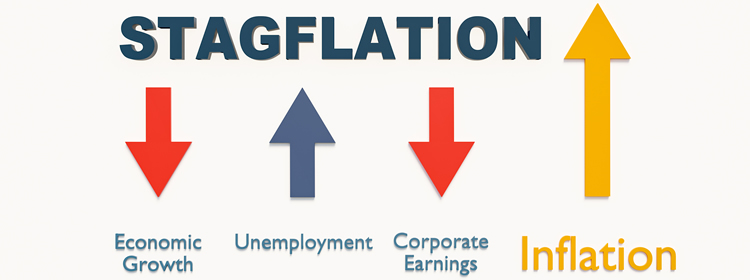The 1970s and 1980s were an era of political and technological progress, with iconic figures like Ronald Reagan and groundbreaking advancements like the Space Shuttle. However, amidst these highlights, another phenomenon was taking off with equal force: the meteoric rise of gold and silver. But what sparked this sudden interest in gold and silver during this era, and what can we learn from it today? Stagflation dominated the economic headlines of the 1970s and 1980s, and it is looming once again. It may be time to revisit this term and consider its potential impact on your investment portfolio. While parachute pants may be permanently lost to the 1980s, the reemergence of stagflation poses a significant risk to the global economy and could serve as a catalyst for substantial gains in the precious metals sector in the years ahead. As we reflect on the past and contemplate the future, the lessons of history may hold the key to unlocking new opportunities and navigating the challenges ahead.
The stagflation of the 1970s and 1980s was a turbulent period for the global economy, marked by high inflation and stagnant economic growth. During this time, the price of gold and silver experienced a historic surge as investors sought refuge in these precious metals as a hedge against the eroding value of paper currencies. The price of gold, in particular, skyrocketed from approximately $40 per ounce in the early 1970s to over $800 per ounce by the end of the decade. This rise in price was fueled by a combination of factors, including the weakening US dollar, geopolitical tensions, and growing demand from investors and central banks. Meanwhile, the price of silver saw similarly impressive gains, rising from approximately $1.50 per ounce in the early 1970s to over $50 per ounce in 1980 before ultimately settling at around $10 per ounce in the early 1980s. The historic price movements of gold and silver during the stagflation era underscore their enduring appeal as safe-haven assets.
Stagflation is an economic condition characterized by a stagnant economy with high inflation. It occurs when a country experiences low economic growth, but at the same time, prices of goods and services continue to rise. This situation is challenging for policymakers as traditional measures to stimulate economic growth, such as reducing interest rates, may exacerbate inflation. Stagflation can be caused by a variety of factors, including supply shocks, high levels of government debt, and structural imbalances in the economy.
Stagflation is a risk that we may be facing now. The United States has experienced high inflation over the last two years, and the Federal Reserve has made a public effort to combat it. However, aggressive interest rate hikes by the Fed may result in an economic slowdown and high unemployment. The recent banking crisis could also lead to economic contraction as money is pulled from the system. Despite the Federal Reserve’s actions, there are larger inflationary factors at play, such as the world’s overwhelming debt and the intensifying geopolitical landscape. A growing list of countries are publicly stating their desire to conduct trade and hold reserves outside of the U.S. Dollar, leading to a phenomenon now referred to as “Dedollarization”. Additional inflationary pressures from supply chain constraints add to rising prices. These factors increase inflationary pressures beyond the Fed’s capabilities, and when combined with a slowing economy could result in stagflation.
In a stagflationary environment, the menu of attractive investment options dwindles. Stocks lose their appeal because of squeezed profit margins, and bonds become less attractive due to their inability to keep up with high inflation. As the list of attractive investment options diminishes, investors turn to precious metals as an ideal vehicle for navigating the challenging stagflation terrain. What makes this interesting for precious metals investors is that, with such a small percentage of the world’s investable capital in gold and silver, even a trickle of new money can have a major impact on prices. And when the trickle becomes a flood, returns like those experienced in the 70s and 80s could become a reality again.
For millennia, gold and silver have been a reliable means of preserving wealth, yet it is astonishing how few Western investors have them as part of their portfolio. The percentage of investable capital and/or investors engaged in precious metals is remarkably low by historical standards. A common, and likely conservative, estimate is that only one in every 200 US citizens invests in precious metals. It is mind-boggling to consider the influx of new capital that will enter the precious metals market if that number increases to five or six in every 200 (which would still be below historic averages). If the global economy experiences a new period of stagflation, it could prompt a surge of investment in precious metals, resulting in substantial gains for investors beyond their initial expectations. With the potential for stagnant economic growth and rising inflation, investors may turn to precious metals as a safe haven for their capital, driving up demand and increasing the value of these assets.





